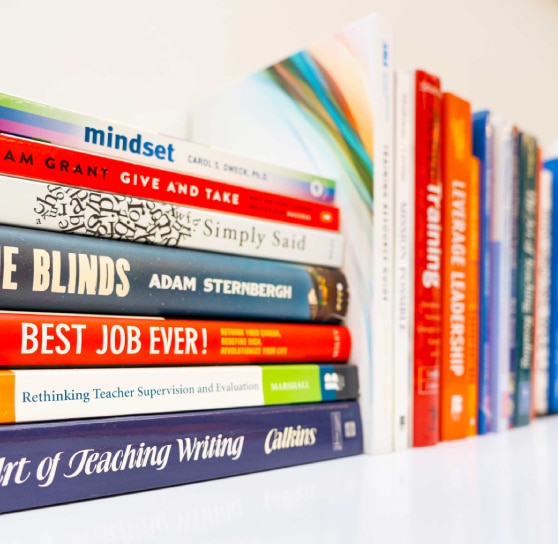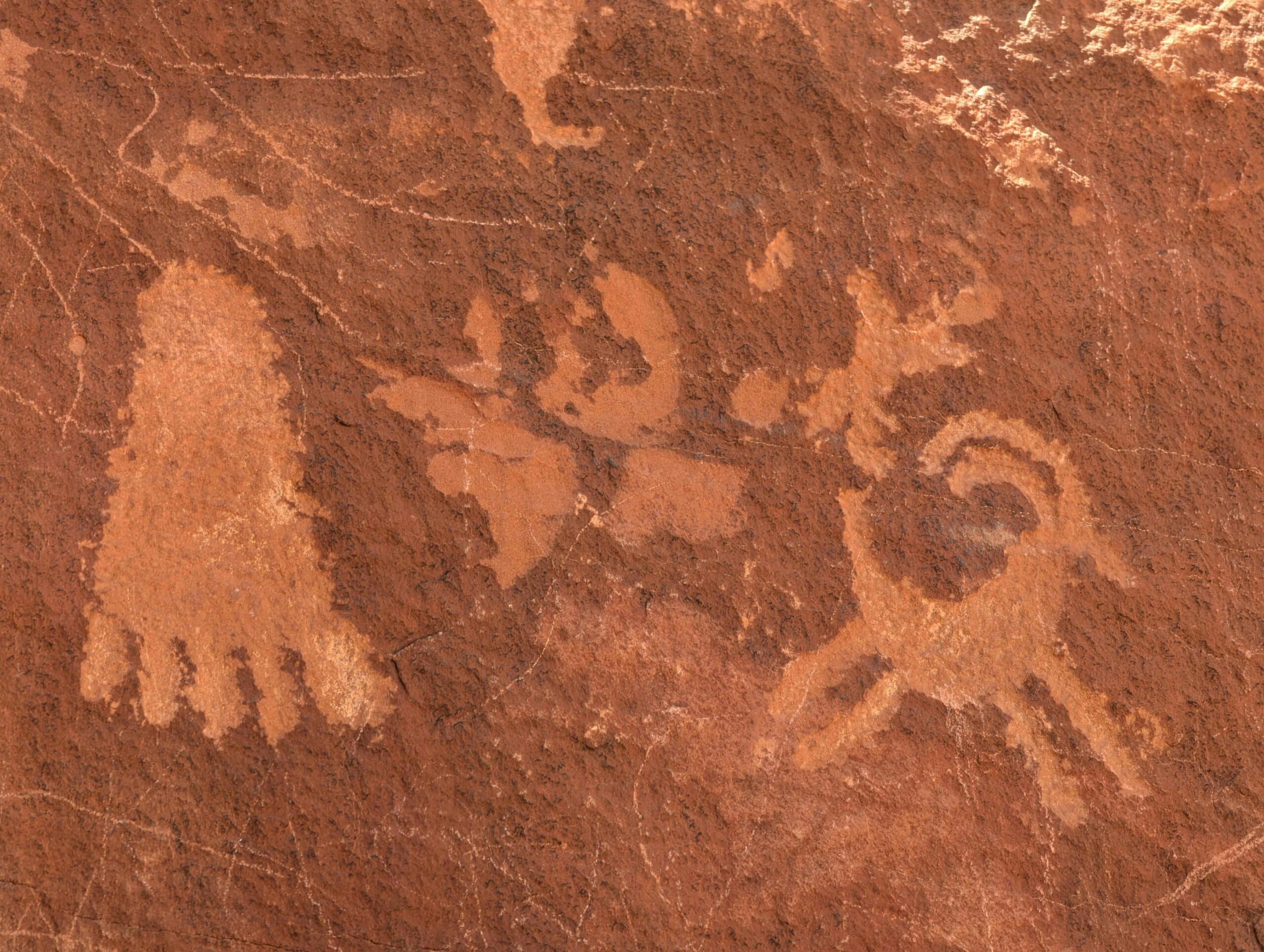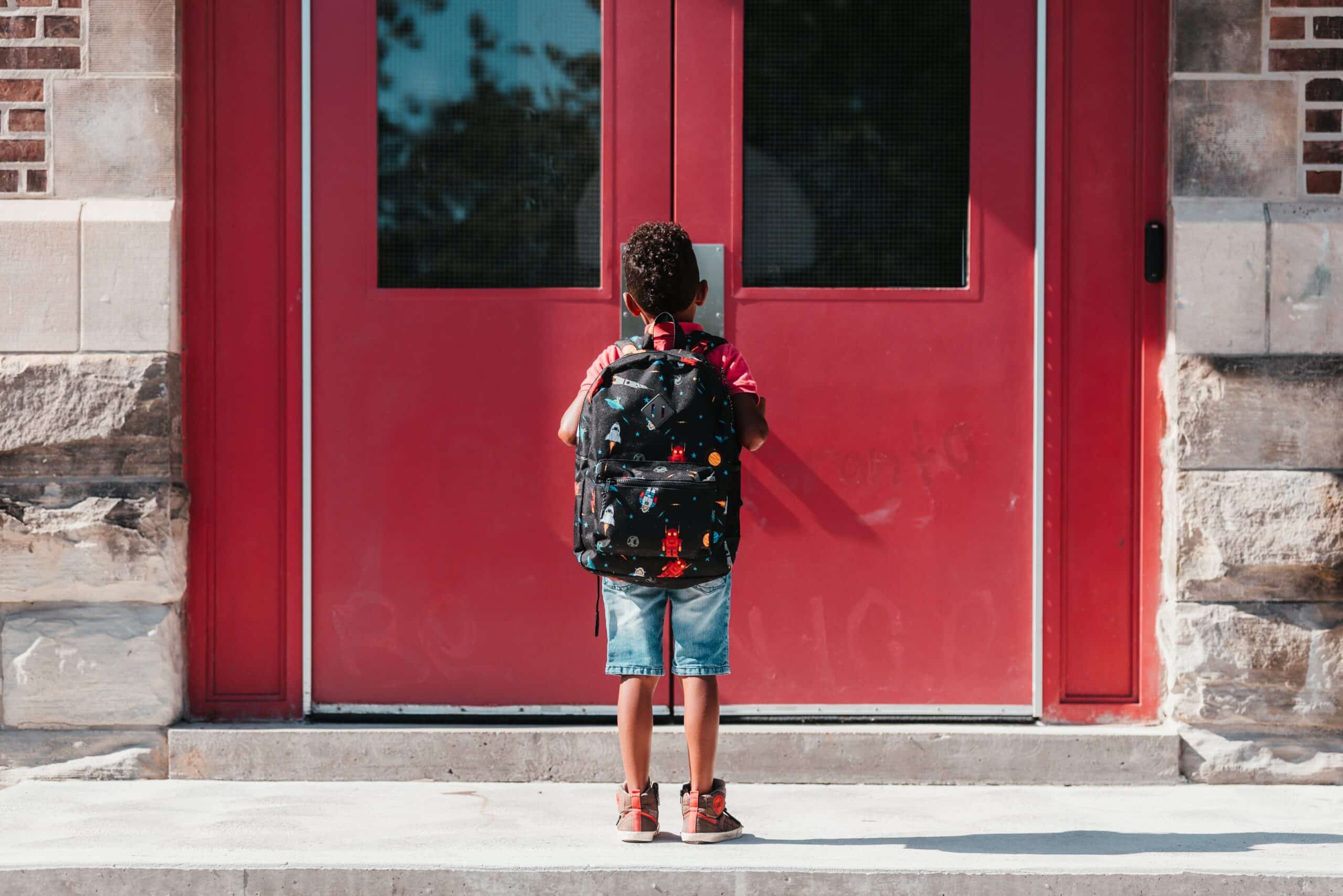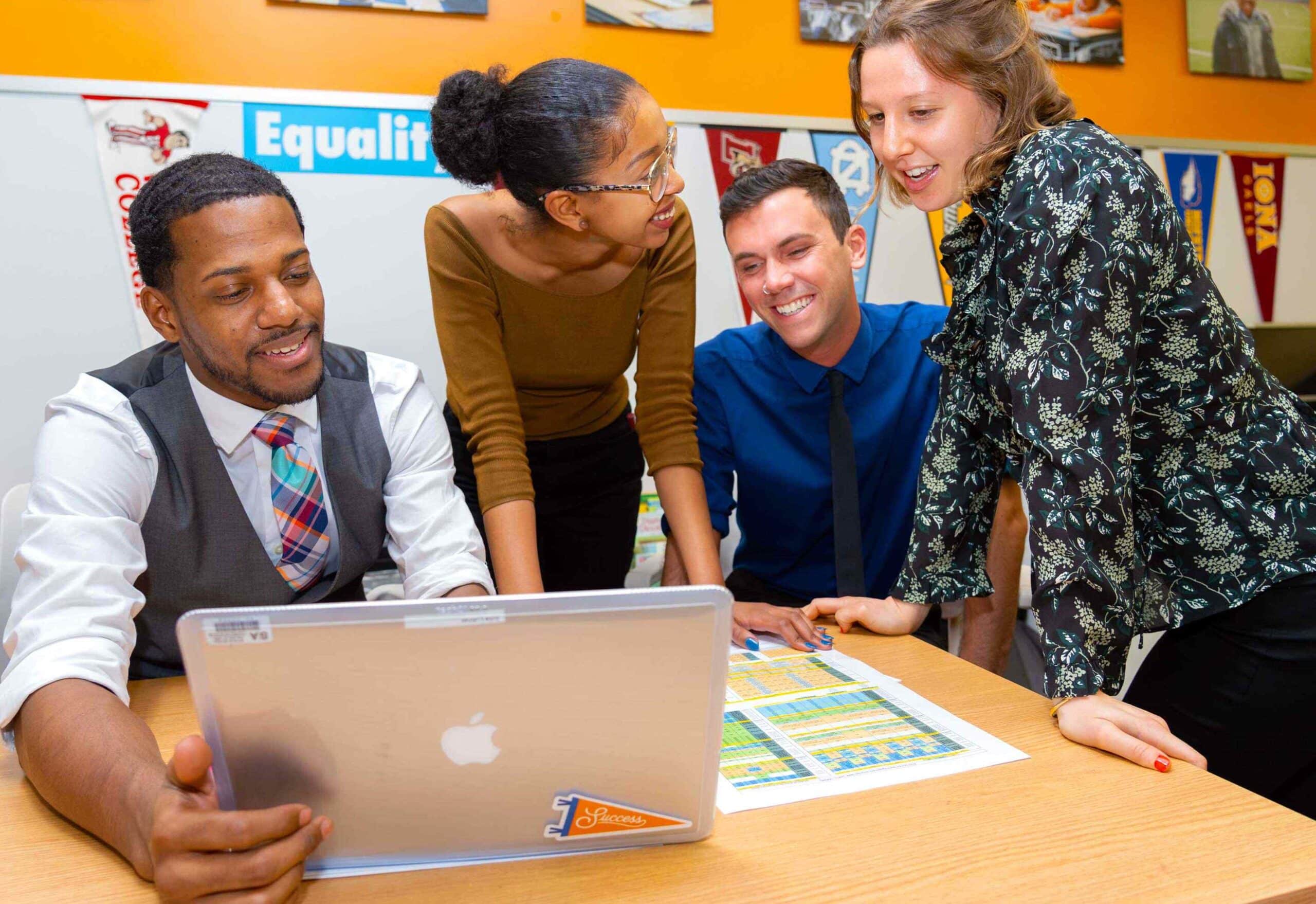


Success Academy’s unique commitment to science starts in kindergarten. We strive to cultivate a passion for the sciences early in life, build a comprehensive foundation of knowledge, and teach students to investigate and analyze real-world problems. Our vision of science relies on two related commitments: mastery of a substantive body of scientific knowledge and an inquiry-based approach to accumulating this knowledge. Equipping students with a firm grasp of scientific concepts is central to our model, and students must understand that these concepts aren’t simply plucked from the air, but rather arrived at through scientific thinking and experimentation. To that end, our scholars do science to understand that scientific knowledge comes from posing questions, designing experiments, gathering data, and drawing conclusions. Rather than viewing scientific knowledge as etched in stone, they come to understand that ideas about the world change with new evidence. In addition, our program incorporates The Next Generation Science Standards (NGSS) and the BSCS 5E Instructional Model.
We believe excellent science classrooms are ones in which students experience curiosity and joy, and make connections between classroom science and the natural world around them. Embedded in our program is the belief that struggle and student-led inquiry are inherent to the mastery process. Through our progressive approach to learning, students realize that unexpected results do not signal failure, but instead present valuable opportunities for new questions.
Through our science program, students learn that science and engineering are creative and exciting fields. They discover that there are countless, fascinating scientific questions to be asked and engineering challenges to be solved—and will be inspired and equipped to seek out answers and solutions. No matter what path students choose to pursue in life, the SA science program will spark curiosity, sharpen problem-solving capabilities, and fuel passion for knowledge.
The best questions point to and highlight the big ideas. They serve as doorways through which learners explore the key concepts, themes, theories, issues, and problems that reside within the content, perhaps as yet unseen: it is through the process of actively “interrogating” the content through provocative questions that students deepen their understanding.1
Use the essential question to drive the unveiling and mastery of ideas, and ground the unit in an overarching purpose, often as a storyline. Mentioning the essential question or having students answer it at the end of some lessons does not mean the teacher is using it purposefully.
1 From Wiggins, G., & McTighe, J. (2005). Understanding by design. Alexandria, VA: Association for Supervision and Curriculum Development.
How can humans use sound to create an outstanding concert?
Your lab is hosting a Science Concert, and your scholars will be the stars! In this unit, scholars will dive headfirst into the world of sound waves, exploring their characteristics and the ways that humans detect waves to better understand the world around them. Scholars will investigate the nature of sound waves and use their observations to make meaning of the relationship between vibrations, waves, and sounds. Can scholars use these discoveries to create their own instrument in time for your lab’s Science Concert?
Science and Engineering Concepts highlighted in this unit:
Science and Engineering Practices highlighted in this unit:
Note: As with any unit, scholars engage in many practices in a given investigation. These practices are highlighted because they appear in most lessons.
Plan carefully for safety in all lessons. The top safety risks in this unit include:
Scholars only have a few weeks to make an instrument for the Science Concert! Can they determine what sounds are and how they’re made?
Could the key to sound really be vibrations? Today, scholars use their senses to explore the effect of vibrating a variety of objects.
A new challenge is revealed about the Science Concert. Can scholars learn everything they need to know about vibrations and sounds in time for the show?
Scholars have unearthed the secret behind vibrating Slinkys, but what do all vibrating objects have in common? Today, scholars explore more vibration models in order to prepare for the upcoming Sound Experts presentation.
A difficult audience question leads to scholars’ toughest challenge yet. Can they use a water wave model to determine what happens to molecules inside a wave?
Scholars deeply studied the patterns among vibrating objects, but what about vibrations you can’t see? Today, scholars return back to sound vibrations and explore ways to make the invisible visible.
The Sound Experts’ problem has been solved, and the wave presentation is being finalized! Scholars will now extend their knowledge of sound to determine different sounds they can create in order to perform the most exciting concert possible for their audience.
How can scholars make sure their sound waves travel to everyone in the audience? Today, scholars will sort sounds based on the differences they noticed from the previous lesson and discuss which types of sounds they should use during the concert to ensure that everyone can hear their beautiful music.
The opening night of the Science Concert is just a few short days away! Can scholars put together all of their knowledge about vibrations, waves, and sound in order to create their concert instrument?
Scholars have worked hard and prepared diligently for the Science Concert. They will finally use their plans to create an instrument that can create both loud and soft sounds for the performance.
Scholars only have a few weeks to make an instrument for the Science Concert! Can they determine what sounds are and how they’re made?
By the end of the lesson, scholars must know that vibrations are back and forth motions. They will see this when they pluck the rubber band and see it move back and forth. Use your observations during the lesson to determine how well scholars understand that there is a relationship between the rubber band moving and sound being produced. Consider which scholars need additional support with this concept—they will have an additional chance to master this idea in Lesson 2.
Could the key to sound really be vibrations? Scholars use their senses to explore the effect of vibrating a variety of objects.
This Exit Ticket assesses scholars’ understanding of the lesson’s Big Science Idea. By the end of the lesson, scholars must know that vibrations are back and forth motions and that vibrations cause sound. They should observe a pattern in the results of vibrating objects; these objects create sound. In upcoming lessons, scholars will learn that vibrations create waves.
Assignment:
Lianna bought a new violin. She took it out of the case and noticed that the strings were not moving.
Will Lianna’s violin make a sound? Circle your answer below. [1]
Yes No
Scoring:
A new challenge is revealed about the Science Concert. Can scholars learn everything they need to know about vibrations and sounds in time for the show?
[Material Management Tip: Ask two scholars to model each Slinky vibration activity. Explicitly point out the importance of only one partner vibrating the Slinky at a time.]
Use scholar conversation and scholar work to determine how well scholars understand the Big Science Idea: Repeated patterns of motion create waves. By the end of this lesson, scholars must know that a vibrating object can create a wave. They should observe the effect of vibrating a Slinky: a wave. In the next lesson, scholars will have one more opportunity to understand that vibrating matter creates waves. Consider which students will need additional support with this concept.
Scholars have unearthed the secret behind vibrating Slinkys, but what do all vibrating objects have in common? Today, scholars explore more vibration models in order to prepare for the upcoming Sound Experts presentation.
This Exit Ticket assesses scholars’ understanding of the lesson’s Big Science Idea. Vibrating matter can create sounds, and sounds are created by vibrating matter. By the end of the lesson, scholars must know that regular patterns of motion always create waves and the vibrating matter will produce a wave. This is the last lesson that directly addresses this idea. If scholars are still struggling to articulate how sound is created, consider planning a flex lesson, allowing scholars additional opportunities to master this idea.
Assignment:
Put an X next to each activity that makes a wave. [2]
Scoring
A challenging audience question leads to scholars’ toughest challenge yet. Can they use a water wave model to determine what happens to molecules inside a wave?
[Materials Tip: Materials can easily be substituted.]
[Instructional Tip: Explicitly explain the model scholars will be using. They should know that the objects in the water represent molecules, and scholars will be creating vibrations in the water.]
Use scholar work and conversation to assess how well scholars understand the Big Science Idea: Waves have predictable motion. By the end of the lesson, scholars must understand that when waves move across the surface of deep water, the water goes up and down in place and does not move in the direction of the wave, as indicated by the floating materials in the bin.
Scholars deeply studied the patterns among vibrating objects, but what about vibrations you can’t see? Today, scholars return back to sound vibrations and explore ways to make the invisible visible.
[Content Tip: Scholars may struggle to make the connection between invisible sound waves and their effect on small bits of matter. If time permits, consider conducting this extra experiment with your scholars that proves the existence of air before teaching Lesson 6.]
Use scholar conversation and work to assess how well scholars understand the lesson’s Big Science Idea: Sound moves in a particular pattern. By the end of this lesson, scholars must know that sound travels in waves through air, comparable to waves traveling in water. They will see this as they observe the salt “jumping” when they bang on the metal tray. Note scholars that struggle to articulate the relationship between sound waves and their effect on small bits of matter. Consider how you can support these scholars in upcoming lessons.
The Sound Experts’ problem has been solved, and the wave presentation is being finalized! Scholars will now extend their knowledge of sound to determine different sounds they can create in order to perform the most exciting concert possible for their audience.
This Exit Ticket assesses scholars’ understanding of the lesson’s Big Science Idea. In this lesson, scholars should notice patterns while exploring at the table. Scholars do not need to know that sounds can have different pitches and volumes.
Assignment:
Shadae noticed that her baby sister responded differently to different sounds. She recorded what she observed in the chart below.
| Noise | Baby Reaction |
|---|---|
Loud vacuum cleaner |
Baby cries |
Loud car honk |
Baby cries |
Quietly purring cat |
Baby smiles |
Quiet lullaby song |
Baby smiles |
The baby cries when there are quiet sounds. The baby cries when there are loud sounds. The baby smiles when there are loud sounds.
Scoring:
How can scholars make sure their sound waves travel to everyone in the audience? Today, scholars will sort sounds based on the differences they noticed from the previous lesson and discuss which types of sounds they should use during the concert to ensure that everyone can hear their beautiful music.
This Exit Ticket assesses scholars’ understanding of the lesson’s Big Science Idea. Use this Exit Ticket as well as scholar work and conversation to assess how well scholars understand that waves can be used to communicate different types of sounds.
Assignment:
Yolanda wanted to get the attention of a friend who was all the way at the other end of the playground. She decides to play her new drum to get her friend’s attention.
With a lot of energy |
With a little energy |
Scoring:
The opening night of the Science Concert is just a few short days away! Can scholars put together all of their knowledge about vibrations, waves, and sound in order to create their concert instrument?
[Instructional Tip: Lessons 9 and 10 can be structured in multiple ways. This lesson and lab notebook is currently written to challenge scholars to create an instrument that creates loud sounds and soft sounds. Based on your class’s progress, consider altering the constraints by eliminating this requirement or add constraints based on the types of sounds your scholars have noticed during the previous two lessons (e.g., medium sounds, high and low sounds).]
[Instructional Tip: Consider showing scholars pictures of homemade instruments if scholars are having difficulties brainstorming ways to create an instrument with the provided materials.]
Use conversations and scholar work to assess how well scholars understand the lesson’s Big Science Idea: Humans create tools to communicate over long distances. Scholar work should reflect two different volumes. If scholars are struggling with this idea, consider how you can support them in the final lesson.
Scholars have worked hard and prepared diligently for the Science Concert. They will finally use their plans to create an instrument that can create both loud and soft sounds for the performance.
[Content Tip: If time permits, consider extending the engineering lessons by asking each table to create a small presentation that answers one of the audience questions throughout the unit. Scholars can answer these questions during the Science Concert if you’re choosing to invite others to the event. Alternatively, you can film scholars’ presentations.]
Use conversations, scholar designs, and scholar revision ideas to assess how well scholars understand the lesson’s Big Science Idea: Humans create tools to communicate over long distances. Scholar work should reflect two different volumes. If time allows, plan a flex lesson where scholars get to make revisions to their designs. Consider how you can support scholars who struggle to articulate that humans create tools to communicate over long distances and support them in incorporating this idea into their instrument.
In addition to the resources linked throughout the guide, use the following materials to help you prepare to launch this unit with scholars:
resources
Access a wide array of articles, webinars, and more, designed to help you help children reach their potential.
Curated Middle School Novel List (Grades 5-8)
Educator
Parent
Book lists
Book Lists
Middle School
5th
6th
7th
8th
Literacy

ES PBL Grade 2: Brooklyn Bridge
Educator
Curriculum
Elementary School
2nd
PBL

ES PBL Grade 3: Iroquois and Lenape
Educator
Curriculum
Elementary School
3rd
PBL

Grade 1: PBL School – How It Works!
Educator
Curriculum
Elementary School
1st
PBL
NEWSLETTER
"*" indicates required fields
